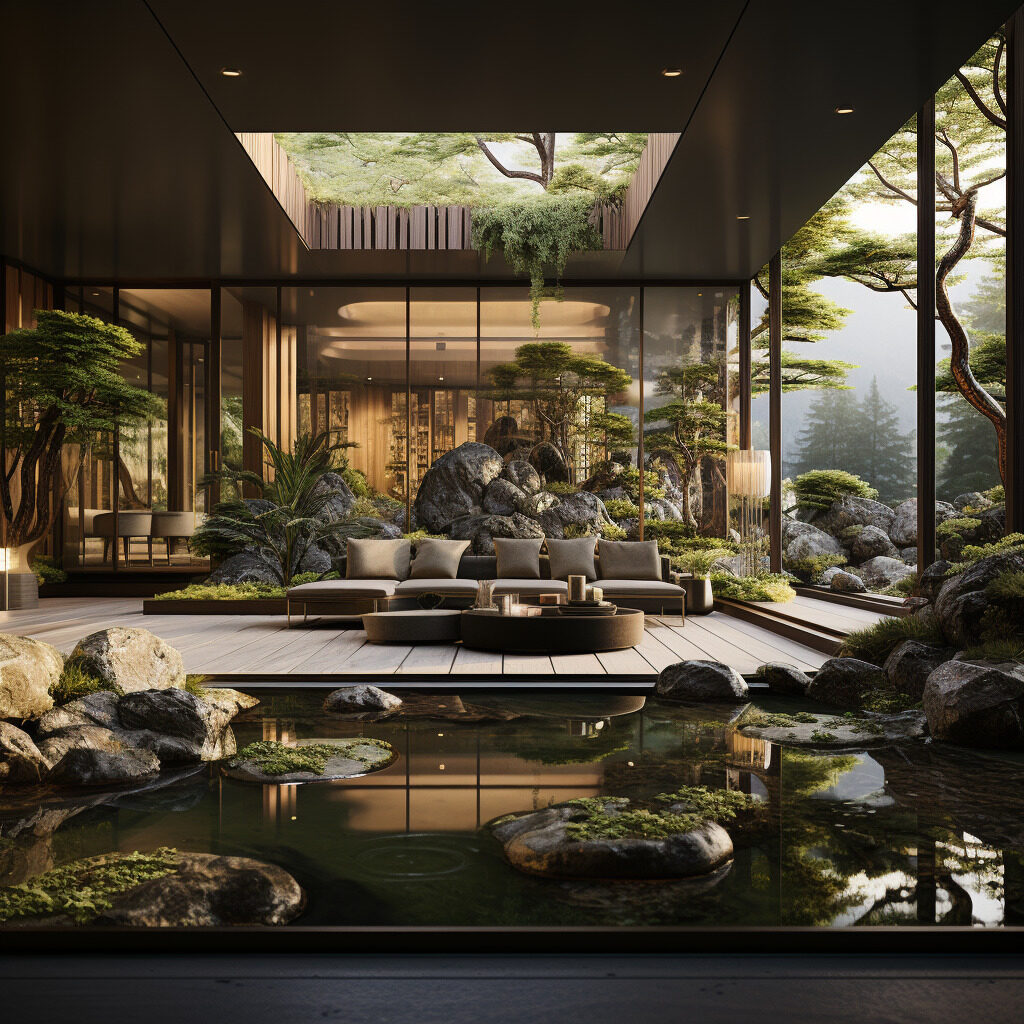Japanese Zen gardens are traditional gardens whose designs are accompanied by Japanese aesthetics and philosophical ideas, avoid artificial ornamentation, and highlight the natural landscape. Plants and worn, aged materials are generally used by Japanese garden designers to suggest an ancient and faraway natural landscape, and to express the fragility of existence as well as time’s unstoppable advance.

Elements of Japanese Gardens:
- Water – Water has a place of choice among the components of a Japanese garden. It contributes to the expression of nature and symbolizes renewal, calm, wonder and continuity in the hereafter. In a Sansui Japanese garden, that is, one containing elevations, various degrees are provided so that water can circulate. Water is found in many forms. It accumulates in the ponds, runs in the streams or tumbles in the cascades. The clear, circulating water contributes to keeping the air fresh throughout the summer. The ponds and the cascades are given a precise orientation with respect to the sun to determine how it will be reflected by the water.
- Stones – Stones are given special attention in Eastern philosophy. A symbol of duration and of the omnipresence of the forces of the nature, they anchor the garden to the ground and give it its specific personality. The stones are laid out in accordance with strict rules, depending on their shapes and sizes; they often are twinned by pairs and by style contrast (a male rock opposed to a female rock). Stones create relief, produce hills and valleys giving birth to cascades, streams and ponds. The type of stone to use is one of the most important element, in the design of a Japanese garden.
- The lantern – With the advent of the tea ceremony, the lantern became a leading element in the layout of a Japanese garden. Originally intended to guide the visitors during nocturnal celebrations, its light was also considered as the light of knowledge clearing away the clouds of ignorance. Sculptured in stone, the Yukimi-gata lantern, or snow lantern, which we can admire here is of current use. Placed near water it provides an architectural element which contrasts with the natural components of the garden.
- Bridges – Bridges are privileged sites in a Japanese garden, where one will linger and take in the beauty of the landscape, watch the carps swimming in their watery elements, and enjoy the softness of the breeze. Bridges may be built of wood, bamboo, earth or stone. Whether they are rounded, arc-shaped or in zigzags, they always remain in harmony with the surrounding nature.
- Plants – The Japanese show a natural ability to interpret the charm of plants and flowers in order to express their joys and pains. Their communion with nature manifests itself through an elaborate symbolism and that is why their interest for the plant realm has become a real passion.
- Koi Carps – Japan is a country where a large population leaves little land available for flower gardens. The Japanese, therefore, have found places to grow living flowers, the colored carps. They appeared in Japan many centuries ago and the Japanese have crossbred them for over 100 years, producing carps of high value. Contests are held and the carps are judged according to the number of spots, variety of colors, patterns on their bodies and types of scales. Indispensable inhabitants in the pond of any Japanese garden, carp bring a flash of colour to the shallow waters. These “living flowers” are very popular in Japan, and are even entered in competitions, where they are judged on their colours and patterns and the quality of their scales. Carps can live for up to 50 years. In Japanese culture, they are a symbol of strength and perseverance.

If you liked this article, then you may be interested in the following article as well…
Are you planning to do your Home & Landscape Renovation? Click on this link to preview our Latest Publication on 'Home Interior Design & Renovation' >>
Reference : Wikipedia & espacepourlavie.ca
